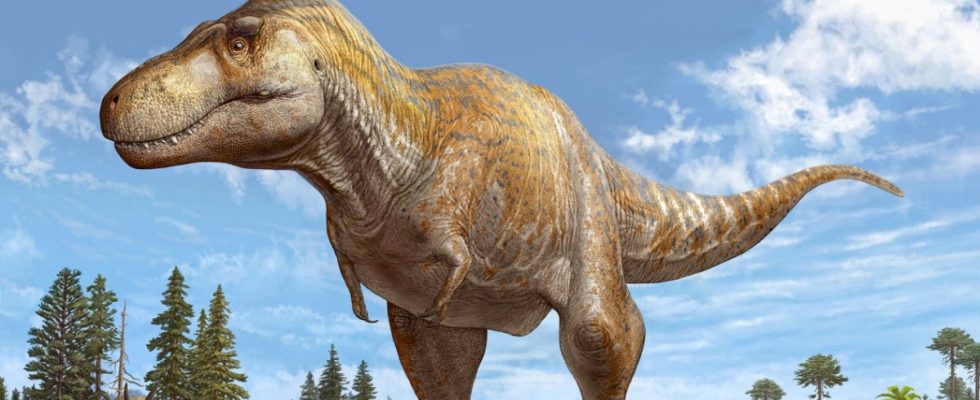One of the biggest mysteries surrounding the most famous of all dinosaurs, the fearsome Tyrannosaurus Rex, is where it actually came from. The twelve-meter-long and six-ton animal appears to have appeared out of nowhere in what is now North America at the end of the Cretaceous Period. Fossils of ancestors that make up T.Rex could have developed, have not yet been found in the USA despite intensive searches.
According to a recent study published in the science journal Scientific Reports has appeared, had T. rex but at least one related species that lived in the same area six to seven million years before it. According to the study, the newly discovered species, which paleontologists gave the name Tyrannosaurus mcraeensis, is not a direct ancestor of T. rex, but did share a common ancestor with it.
The team led by Sebastian Dalman from the New Mexico Museum of Natural History and Science came to this conclusion when they examined a fossil dinosaur skull that had been found in New Mexico in 1983 and had until now been mistaken for the skull of a Tyrannosaurus Rex .
The differences between the two species are minimal, but clear, the researchers write in their study. Among other things, the shape of the skull bones of T. mcraeensis is different from that of T. rex. Findings from another research group, which has redetermined the age of the sediment layer in which the skull was found, also suggest that the skull from New Mexico actually belongs to a previously unknown species. Accordingly, the rock is around 71 to 73 million years old – too old to find the remains of a T. rex, which, as far as we know, lived several million years later. In their paper, the researchers refer to T. mcraeensis as the “sister” of T. rex – but they do not comment on the gender of the giant lizard fossil they are now examining.
The researchers assume that T. mcraeensis was already as huge as its famous relative. They conclude this, among other things, from the animal’s huge teeth, which are just as impressive as those of T. rex.
The teeth of the newly discovered dinosaur species were up to nine centimeters long.
(Photo: NICK LONGRICH/via REUTERS)
According to the study authors, the discovery of T. mcraeensis supports the thesis that Tyrannosaurus originated in what is now North America, which was then divided by a sea into an eastern part, called Appalachia, and a western part, called Lamidia. The study in Scientific Reports According to this, the origin of the tyrannosaurs lies in southern Lamidia.
The counter-theory, according to which Tyrannosaurus evolved in Asia and then migrated to North America, is not yet off the table but has become less likely. Fossils of dinosaurs closely related to Tyrannosaurus rex have also been found in Asia: Tarbosaurus bataar and Zhuchentyrannus magnus, both of which were slightly smaller and lighter than Tyrannosaurus rex.
Lamidia is known for gigantism: many animals there became gigantic
It fits with the new findings that the south of Lamidia is known for gigantism. In the late Cretaceous period, several unusually large dinosaur species lived there. For example, the Sierraceratops, whose horned skull was one and a half meters long, or the long-necked Alamosaurus.
The discovery of Tyrannosaurus mcraeensis may solve another T. rex mystery besides its origin, namely the question of why the animal became so huge in the first place. “Giant tyrannosaurs likely evolved to prey on the giant herbivores of the South,” write the authors of the current study. However, why the tyrannosaur prey in Lamidia became so huge is still unknown.

